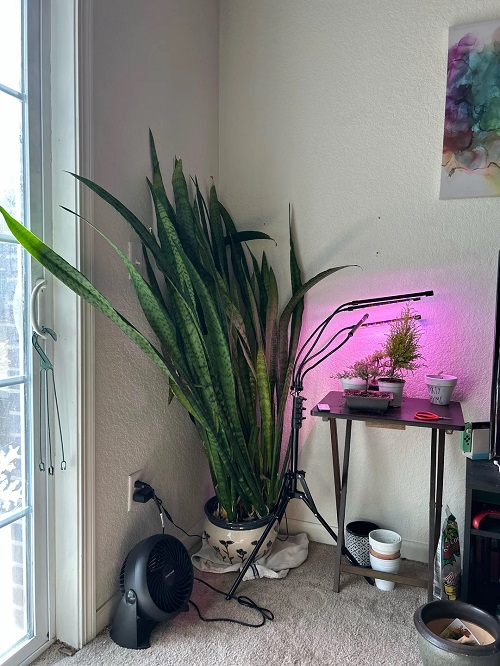These fatal snake plant growing mistakes can be reasons for swift demise of your plant that you must avoid!
It’s a no-brainer for greenthumbs that snake plants are quite hardy. While they may be hard to kill with the minimum effort and care, they cannot survive extended periods of ignorance and might even die from neglect! So before it does, ensure that you are not making these fatal snake plant-growing mistakes and that your plant is getting all the care it needs.
Most Fatal Snake Plant Growing Mistakes
1) Creating an Overly Humid Environment
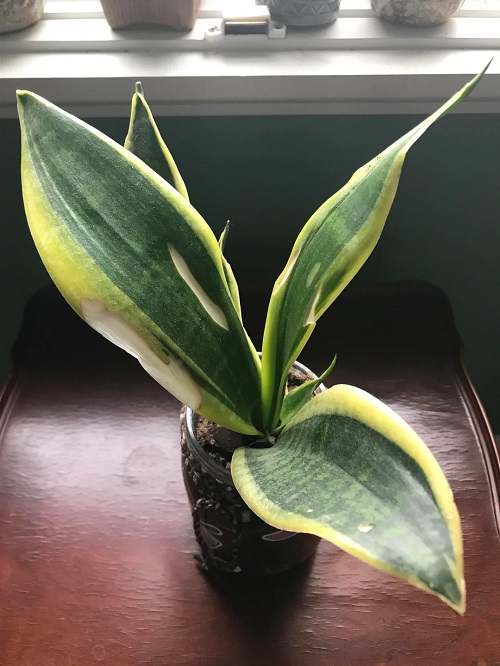
Snake plants are pretty hardy and don’t require specific humidity, thus thriving in a typical household. However, issues can arise if the air circulation around your plant is inadequate. Poor ventilation may lead to white spots on your snake plant, which you might mistake for harmless hard water deposits. In reality, these could be early signs of pest infestations or fungal infections. Additionally, mold and mildew might show up as white, powdery patches on the plant.
If the plant sits in an overly humid area with stagnant air, it could also attract soil mites and fungus gnats. These pests can make themselves known by creating web-like structures in the soil, contributing further to the plant’s stress.
Seeing white spots, dry leaves, or stunted growth are signals that your care routine needs tweaking. Start by changing the potting mix to one that’s more aerated. If these issues have only started appearing recently, consider reducing your watering frequency and applying a fungicide. To prevent future problems, make sure to aerate the soil regularly to improve air circulation around your snake plant.
2) Leaving it an Overly Shady or Sunny Spots
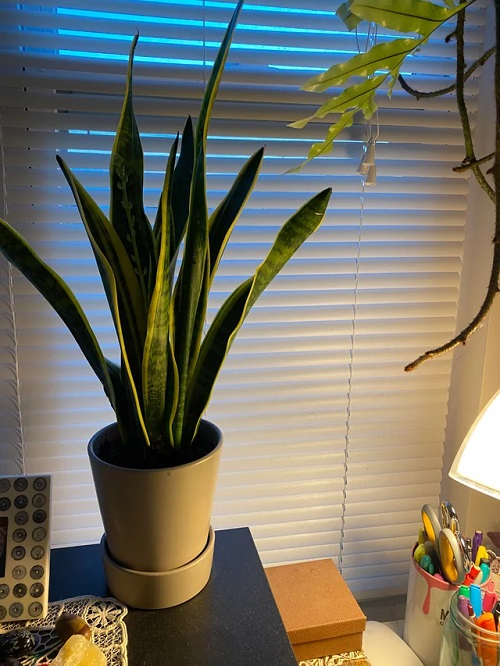
Snake plants are often labeled as low-light tolerant, but this doesn’t mean they will still thrive if placed in absolute shade. In fact, insufficient light can severely hinder their growth, causing the stems to weaken and the plant to stretch awkwardly towards any available light source, losing its characteristic upright form. Additionally, a lack of light can prevent the potting mix from drying out adequately, increasing the likelihood of root rot.
On the flip side, leaving it unattended in direct sunlight can be harmful, too. Excessive sun exposure during the peak afternoon hours can manifest as crispy leaves with brown edges, ending up in plant death.
To hit the right balance, position it near a window where it can receive 2-3 hours of direct sunlight followed by indirect sunlight for the remainder of the day. Regularly rotating your plant will also help it receive even sun exposure, promoting balanced and healthy growth.
3) Letting Pests Feast On the Plant
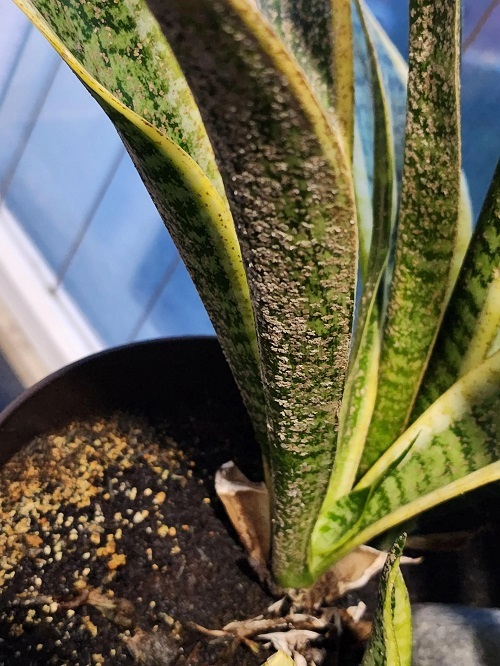
Snake plants are prone to certain fungal attacks that cause southern blight, red leaf spot, and even bacterial infections like bacterial leaf spot and soft rot. If not tended on time, the leaves will turn dull and mushy, ultimately leading to death.
Spider mites and mealybugs are common culprits when it comes to pest infestations in snake plants, and these pests can quickly spread to other plants in your collection if not addressed. Visible signs include holes in the leaves, which, if bigger, might be caused by slugs and snails if your plant is outdoors. If you notice small holes with dry, ragged edges, this could indicate spider mites or caterpillars making a meal of your plant.
You can either wipe the foliage with rubbing alcohol or spray it with a blend of neem oil and dishwasher liquid to fight those ugly pests.
4) Following a Set Schedule for Watering
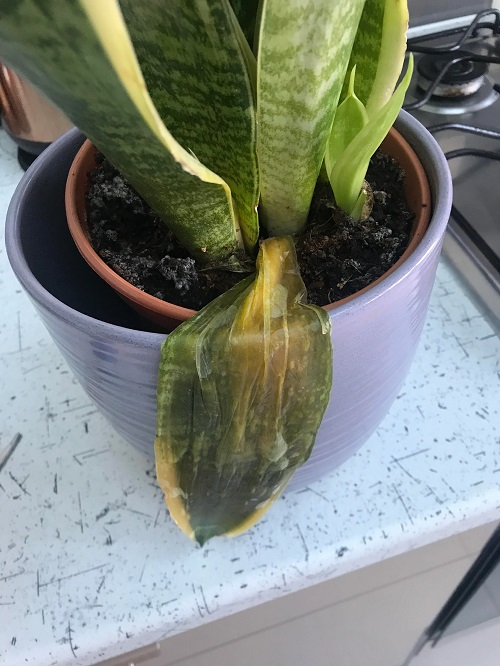
Watering your snake plant isn’t about sticking to a strict schedule; it’s about observing and responding to the plant’s needs. Because snake plants are succulents, they don’t require frequent watering, and even a week of overwatering can lead to soggy soil and root rot, eventually killing the plant. Conversely, insufficient watering can cause the leaves to wilt and turn yellow.
To strike the balance, always stick a finger to the medium and water only when it feels dry to the touch. You can also follow a deep watering routine, soaking the medium completely until water drains from the bottom. This will ensure the roots get enough moisture without creating a soggy substrate.
5) Using the Very Large Pots
While the pot size seems unimportant, an overly large pot can be the breeding ground for various fungal issues. It tends to store excess water, leading to a soggy medium and, hence, inviting root rot.
The ideal pot size should be 2 inches bigger than the plant’s root ball, so it is good to get a rather small pot than an over sized one.
6) Using Only Garden Soil
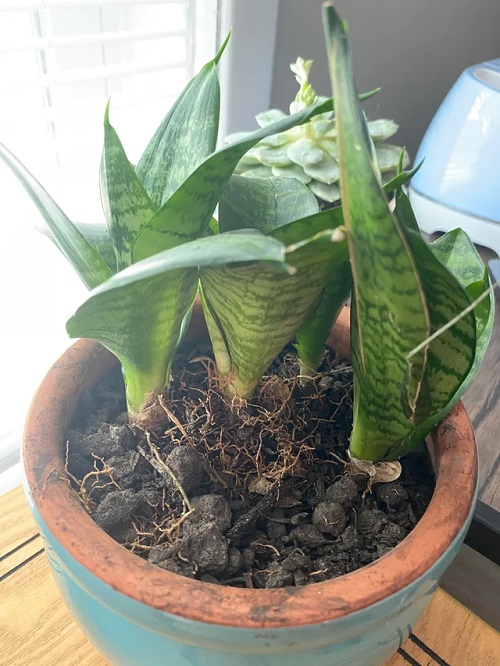
Water collecting at the roots of your Sansevieria plant can lead to a host of problems, from root rot to excess buildup of bacteria and fungi due to lack of oxygen and waterlogged roots. While there are several soil mixes that you can try that would allow your plant good drainage, combining cactus/ succulent potting mix along with pumice can be your best.
You could follow a measurement where you add 2-3 parts of a cactus or succulent mic with 1 part of 1/4th inch of pumice. This soil mix is not only high quality but also really uniform.
7) Over-fertilizing the Plant
Contrary to popular belief, overfertilization does not mean proper care. Rather, it can lead to salt buildup in the medium, manifesting as a white buildup on the soil’s surface, leaf burn (browning of the leaf edges), and general poor health and discoloration of the leaves.
Since snake plants naturally grow in areas in tropical Africa with poor, rocky soil, they don’t generally need a lot of fertilizer. So it’s to go even if you skip fertilizing and only use a nutritious mix when planting. Remember that you must avoid fertilizers that are very high in nitrogen, as high amounts of these nutrients will result in weak, floppy new growth. The appropriate N-P-K ratio in fertilizers for snake plants is 0.5-1-1, that too, not more than twice a year during the warmer months.
8) Ignoring the Need to Repot
It is true that snake plants do like to be root-bound and can even stay in the same pot for many years. But, on the flip side, they will inevitably break out and split the pot that they are planted in. This is why if your plant has had average, healthy growth, you should repot them every few years during the late winter or early spring, as this is the growing season of snake plants.
9) Not Giving Enough Time to Acclimatize After Repotting
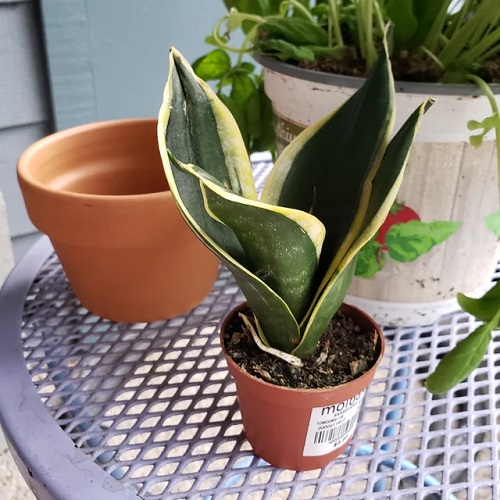
Following up on the previous point, if you have recently repotted your snake plant, you must understand that it is probably stressed out. Moving it to a sunny spot instantly can manifest as yellowing leaves, wilting, and stunted growth. To reduce the transplant shock, you must acclimatize it at a spot with indirect sunlight to adjust to its new environment. Also avoid watering or fertilization at this time.
10) Not Properly Pruning or Maintaining Your Plant
Keeping your snake plant in top condition involves regular pruning and attentive maintenance. Make it a habit to periodically check for yellowing or dead leaves and remove them with clean, sharp shears right at the soil line. This not only cleans up the plant but redirects its energy towards nurturing healthy new foliage.

